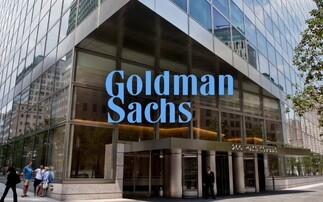After all the exuberance of last year, investors may need to prepare themselves for a less eventful time in 2018. Lionel Melin, Lyxor's senior cross-asset strategist, gives his views for European equity
Valuations look stretched and central banks are gently reversing loose monetary policy. This may dampen the markets' animal spirits at some stage. So far, investors have been sanguine about policy normalisation but markets will, at some point, start adjusting to rising inflation and rates, market volatility and currency movements. Europe is no exception, in spite (or perhaps because) of its economic recovery. High valuation multiples, higher yields and a stronger euro mean some caution is required at the broad index level. Investors cannot afford to be complacent, even if they are currently more confident in Europe than anywhere else*.
Investors may need to adjust their positioning as we move through the year, prompting some country and sector rotation. Picking the right ones, at the right time, will be the key to sustaining returns in the year ahead.
Find out more about Lyxor's investment outlook at LyxorETF.co.uk
The backdrop
The eurozone economy is in recovery mode and we expect growth of around 2.1% this year, just ahead of the wider consensus. Leading economic indicators such as eurozone manufacturing PMI and the German manufacturing Ifo are at all-time highs. The employment picture has improved hugely, but there's still more to come.
Prospects for economic and institutional reform - an essential ingredient in any sustained long-term recovery - have improved. Better EU growth, a more Europhile Germany, and the relatively smooth path of Emmanuel Macron's reforms in France are all supportive. The nature of those eurozone reforms is yet to be determined however, with dividing lines between North and South still evident. With the political scene as it is today, more spending and more fiscal integration have a better chance of success than mooted moves toward greater financial risk sharing.
The Italian elections on 4 March remain a key risk as well as, potentially, a major catalyst. The threat of an "Italexit" seems remote. However, were anti-establishment parties to outperform electorally, progress towards eurozone reforms could be checked or see those reforms become purely cosmetic. It would fail to lure back foreign investors and question the long-term sustainability of the recovery.
More: Lyxor cuts fees on European ETFs
A two-speed Europe
As the above suggests, it may become necessary to dig deeper for opportunity by differentiating between countries. The planets seem perfectly aligned for Emmanuel Macron as he pushes ahead with domestic reforms on areas like tax, the labour market and immigration against a backdrop of better domestic and international growth while France's opposition parties wallow in disarray. Meanwhile deal-making in Germany (and the likely stimulus spending) and the possibility of debt forgiveness for Greece are also areas of interest. Further afield, Eastern European equities have some appeal. In contrast, political gridlock continues to cloud the outlook for Italy and Spain.
The FTSE 100 faces its own Brexit battles. A deal has been reached and there are signs of progress towards a slow, non-systemic transition, but for all that we can't bring ourselves to be too positive on UK equities. Trade treaty complications will soon cloud the horizon.
Sifting through sectors
History tells us today's environment should favour sectors such as financials, oil & gas, basic resources and automobiles, which all tend to be beneficiaries of a rising rate environment. At the same time, telecoms, utilities, consumer staples and real estate are likely to struggle. While largely true, we believe exposures need to be more nuanced.
Within our cyclical exposure, we favour consumer discretionary companies over industrials. These sectors' valuations tend to be highly correlated, but the relationship seems to have broken down, with industrials trading at a much higher forward P/E for no convincing reason given how similar their underlying statistics are. Construction and defence could also be areas worth exploring.
More:
Emerging markets through a European lens
Emerging markets are also accelerating: We expect GDP growth across emerging markets to reach 4.8% in 2018, back to a five-year high. China is expected to continue to deliver economic growth of 6%+ and the probability of a hard landing is falling sharply.
To capture this growth within a European equity portfolio , we favour commodity-linked sectors. This is for valuation reasons primarily, but also because of the weaker dollar. Capital goods come under pressure when the dollar weakens, but commodity prices should benefit, supported by a better supply/demand picture.
Defensive options
In general, defensive sectors look expensive. However, the need for balance in any portfolio means investors shouldn't overlook them altogether. Even though oil and gas has a strong credit rating and strong balance sheet, and the information technology sector continues to generate significant cash, both sectors could come under pressure if the credit market starts to wobble.
Despite all the optimism, there could still be difficult times ahead for investors. Markets could be on the cusp of a significant sector rotation as they adapt to changing economic conditions. Success may be dependent on staying on the right side of such a shift.
Find out more about Lyxor's investment outlook at LyxorETF.co.uk
THIS COMMUNICATION IS FOR ELIGIBLE COUNTERPARTIES OR PROFESSIONAL CLIENTS ONLY
*According to the latest State Street Investor Confidence Index.
All data & opinions: Lyxor Cross Asset Research, 1 February 2018 unless otherwise stated. Past performance is no guide to future returns.
This document is for the exclusive use of investors acting on their own account and categorized either as "Eligible Counterparties" or "Professional Clients" within the meaning of Markets in Financial Instruments Directive 2004/39/EC. These products comply with the UCITS Directive (2009/65/EC). Société Générale and Lyxor International Asset Management (LIAM) recommend that investors read carefully the "investment risks" section of the product's documentation (prospectus and KIID). The prospectus and KIID are available free of charge on www.lyxoretf.com, and upon request to [email protected].
The products mentioned are the object of market-making contracts, the purpose of which is to ensure the liquidity of the products on the London Stock Exchange, assuming normal market conditions and normally functioning computer systems. Units of a specific UCITS ETF managed by an asset manager and purchased on the secondary market cannot usually be sold directly back to the asset manager itself. Investors must buy and sell units on a secondary market with the assistance of an intermediary (e.g. a stockbroker) and may incur fees for doing so. In addition, investors may pay more than the current net asset value when buying units and may receive less than the current net asset value when selling them. Updated composition of the product's investment portfolio is available on www.lyxoretf.com. In addition, the indicative net asset value is published on the Reuters and Bloomberg pages of the product, and might also be mentioned on the websites of the stock exchanges where the product is listed.
Prior to investing in the product, investors should seek independent financial, tax, accounting and legal advice. It is each investor's responsibility to ascertain that it is authorised to subscribe, or invest into this product. This document is of a commercial nature and not of a regulatory nature. This material is of a commercial nature and not a regulatory nature. This document does not constitute an offer, or an invitation to make an offer, from Société Générale, Lyxor Asset Management (together with its affiliates, Lyxor AM) or any of their respective subsidiaries to purchase or sell the product referred to herein.
Lyxor International Asset Management (LIAM), société par actions simplifiée having its registered office at Tours Société Générale, 17 cours Valmy, 92800 Puteaux (France), 418 862 215 RCS Nanterre, is authorized and regulated by the Autorité des Marchés Financiers (AMF) under the UCITS Directive (2009/65/EU) and the AIFM Directive (2011/31/EU). LIAM is represented in the UK by Lyxor Asset Management UK LLP, which is authorized and regulated by the Financial Conduct Authority in the UK under Registration Number 435658. Société Générale is a French credit institution (bank) authorised by the Autorité de contrôle prudentiel et de résolution (the French Prudential Control Authority).
Lyxor International Asset Management ("LIAM") or its employees may have or maintain business relationships with companies covered in its research reports. As a result, investors should be aware that LIAM and its employees may have a conflict of interest that could affect the objectivity of this report. Investors should consider this report as only a single factor in making their investment decision. Please see appendix at the end of this report for the analyst(s) certification(s), important disclosures and disclaimers. Alternatively, visit our global research disclosure website www.lyxoretf.com/compliance.













